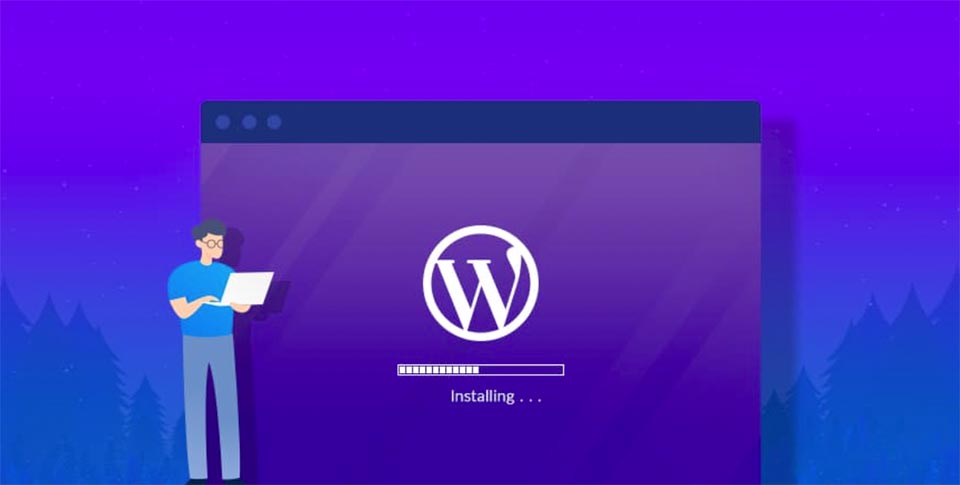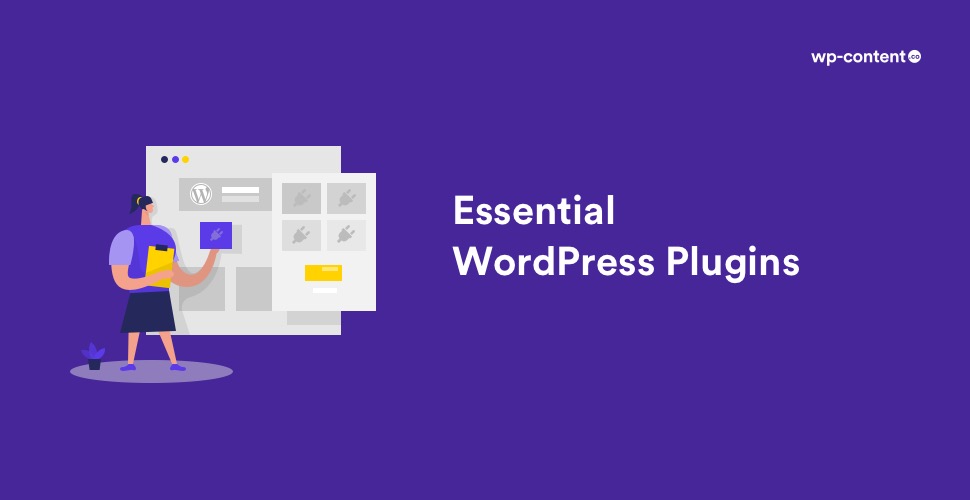How to Set Up a Successful WordPress Blog in 2024: A Step-by-Step Guide
Are you excited to start blogging in 2024? Creating a WordPress blog is a great choice! WordPress is a simple and powerful platform used by millions around the world. It’s ideal whether you want to share your thoughts, build a business, or show your creative work. With lots of customization options, WordPress helps you create a blog that fits your style.
This guide will walk you through the whole process, from picking a domain name and hosting to designing your blog and writing your first post. Even if you’re new to blogging, WordPress is beginner-friendly and offers many tools to help you succeed. By the end of this guide, you’ll have your blog ready to go, so you can start sharing your ideas.
Step 1: Define Your Blog’s Purpose
What is the Purpose of a Blog?
The purpose of a blog can differ based on the blogger’s objectives, but it generally serves several important purposes:
- Sharing Information: Many bloggers use their platform to educate their audience on topics like technology, health, or business. They offer tips, suggestions, and expert advice to help people learn.
- Establishing an Online Presence: Blogs enable individuals and businesses to create their digital identity, demonstrate their expertise, and connect with a wider audience.
- Generating Income: Some bloggers earn money by using advertisements, affiliate marketing, or selling products and services on their blog.
- Sharing Personal Thoughts: Blogs provide a space for people to express their personal experiences, ideas, and creativity.
- Creating a Community: Many blogs focus on bringing together people with similar interests, encouraging conversations, and forming a supportive community.
- Improving SEO and Marketing: For businesses, blogs are a valuable tool for enhancing search engine rankings, increasing website traffic, and supporting marketing efforts, which can lead to higher sales.
In summary, the main purpose of a blog is to provide useful content while helping the blogger achieve their personal, professional, or business goals.

Before jumping into the technical aspects, take a moment to reflect on why you’re starting a blog. Understanding your purpose will guide your decisions as you build and grow your site. Ask yourself these questions:
- Who is your intended audience?
- What topics will you focus on?
- What do you hope to achieve? (For example, making money, educating others, or creating a community)
Having a clear vision will help you stay focused and create content that truly resonates with your readers.
Step 2: Choose a Domain Name and Hosting Provider
Your domain name is your blog’s address on the internet (e.g., yourblogname.com). It should be:
- Memorable: Easy to spell and pronounce.
- Relevant: Reflective of your blog’s niche or purpose.
- Unique: Avoid names that are too similar to existing websites.
Next, select a hosting provider. Hosting is where your website’s files will be stored. Look for a reliable provider with excellent uptime, fast speeds, and good customer support. Popular options include:
- Bluehost (official WordPress recommendation)
- SiteGround
- Hostinger
Once you’ve chosen a domain and hosting provider, register your domain and purchase a hosting plan.
Step 3: Install WordPress
Most hosting providers offer a one-click WordPress installation feature, making the setup process quick and easy.

Here’s how to do it:
- Log in to your hosting account.
- Navigate to the control panel (often cPanel).
- Find the WordPress installer and click on it.
- Follow the on-screen instructions to set up your blog. You’ll need to:
- Select your domain.
- Set a site title.
- Create an admin username and password (keep these secure!).
Once the installation is complete, you’ll be able to access your WordPress dashboard by visiting yourdomain.com/wp-admin.
Step 4: Choose a Theme
Your theme determines your blog’s design and layout. WordPress offers thousands of free and premium themes to choose from.
To select a theme:
- Go to your WordPress dashboard.
- Navigate to Appearance > Themes.
- Click Add New and browse available themes.
- Preview and install the one you like.
For a more polished and professional look, consider premium themes like XStore, Astra, or GeneratePress. These themes often come with additional customization options and support.
Step 5: Customize Your Blog
After installing your theme, it’s time to make your blog uniquely yours. Go to Appearance > Customize to:
- Add a logo and favicon.
- Set your color scheme and fonts.
- Create a homepage. (Static page or latest posts)
- Set up menus for easy navigation.
Spend some time exploring customization options to make your blog visually appealing and user-friendly.
Step 6: Install Essential Plugins
Plugins extend your blog’s functionality. Here are some must-have plugins for a successful WordPress blog:
- Yoast SEO: Improve your search engine rankings.
- Akismet: Protect against spam comments.
- Jetpack: Enhance site performance and security.
- WPForms: Create contact forms.
- MonsterInsights: Track website analytics.

To install plugins:
- Go to Plugins > Add New in your dashboard.
- Search for the desired plugin.
- Click Install Now and then Activate.
Step 7: Create Key Pages
Every blog needs a few essential pages to provide information to visitors:
- About: Share who you are and what your blog is about.
- Contact: Allow readers to reach you via a form or email.
- Privacy Policy: Inform visitors about how their data is used.
- Disclaimer: (if monetizing) Explain affiliate links or advertising policies.
To create a page:
- Go to Pages > Add New.
- Add content and format it using the WordPress editor.
- Publish your page.
Step 8: Write and Publish Your First Post
Content is the heart of your blog.

Follow these tips for your first post:
- Choose a topic that aligns with your niche.
- Write a catchy headline to grab attention.
- Structure your content with headings, short paragraphs, and bullet points.
- Add images or videos to enhance readability.
- Proofread and edit before publishing.
To publish:
- Go to Posts > Add New.
- Write your content in the editor.
- Add a featured image and tags.
- Click Publish.
Step 9: Optimize for SEO
To help your blog get found by more people, it’s important to optimize it for search engines like Google. Here are some simple SEO tips to improve your blog’s visibility:
- Use Relevant Keywords: Include keywords related to your blog topic in your titles, headings, and content. Think about what words people might search for when looking for information like yours.
- Write Quality Content: Make sure your posts are helpful, engaging, and informative. High-quality content is more likely to be shared and ranked higher in search engines.
- Optimize Your Meta Tags: Your meta title and description help search engines understand what your post is about. Make them clear and include your main keyword.
- Use Internal and External Links: Link to other relevant posts on your own blog (internal links) and to trusted sources (external links). This helps search engines understand your content better.
- Make Your Blog Mobile-Friendly: Many people read blogs on their phones, so make sure your blog looks good and works well on mobile devices.
- Improve Page Load Speed: A fast-loading blog improves user experience and can help your ranking on search engines. Use tools like Google PageSpeed Insights to test and improve your speed.
- Use Image Alt Text: Describe the images on your blog with alt text. This not only helps visually impaired readers but also improves SEO.
- Create Quality Backlinks: Encourage other websites to link to your blog. Backlinks from trusted sites can improve your blog’s authority and search engine ranking.
By following these simple SEO strategies, you can increase your blog’s chances of appearing in search results and attracting more readers.
Step 10: Promote Your Blog
Once your blog is live, it’s time to promote it and attract readers. Here are some simple ways to get the word out:
- Share on Social Media: Post your blog content on platforms like Facebook, Twitter, Instagram, or LinkedIn. This will help you reach a wider audience and get more visitors to your blog.
- Engage with Other Bloggers: Comment on other blogs, share their content, and build relationships with other bloggers in your niche. This can help you connect with their audience and grow your own following.
- Use SEO: Optimize your blog posts for search engines by using relevant keywords. This will help your blog rank higher on Google, making it easier for people to find you.
- Email Marketing: Collect emails from your readers and send them regular updates or newsletters. This will help you stay in touch and bring visitors back to your blog.
- Join Blogging Communities: Participate in online forums and groups related to your blog’s topic. Share your posts, ask for feedback, and connect with other members to increase your visibility.
- Collaborate with Others: Work with influencers, brands, or other bloggers to promote your blog. This could include guest posts, giveaways, or joint content projects.
By promoting your blog consistently, you’ll attract more readers and grow your audience over time.
Step 11: Monetize Your Blog
Once your blog is running well and attracting visitors, you can start earning money.
Here are some simple ways to do that:
- Display Ads: You can join ad networks like Google AdSense, which will show ads on your blog. You earn money when people click on or view these ads.
- Affiliate Marketing: You can share links to products and earn a commission when someone buys through your link. Popular programs like Amazon or ShareASale offer this option.
- Sponsored Posts: Companies may pay you to write posts about their products or services, especially if you have a good number of readers.
- Selling Your Own Products: If you have products like e-books, online courses, or digital downloads, you can sell them directly through your blog.
- Memberships or Subscriptions: You can charge readers to access exclusive content or special sections of your blog.
- Donations: If your readers enjoy your content, they might be willing to support you with donations through platforms like Patreon or PayPal.
Before you start making money, make sure your blog has valuable content and a solid audience. This will help you attract sponsors and partners.
Step 12: Stay Consistent and Keep Learning
To make your blog successful, it’s important to be consistent. Posting quality content regularly keeps your readers engaged and helps attract new visitors. Here’s how to stay on track:
- Create a Posting Routine: Pick how often you want to post, like once a week or every other week, and stick to it. Regular posts will keep your readers interested.
- Connect with Your Audience: Respond to comments, ask for opinions, and interact with your followers on social media. This helps build a loyal community for your blog.
- Measure Your Progress: Use tools like Google Analytics to see which posts your readers like the most. This helps you know what works and how to improve.
- Keep Improving: Blogging and trends online are always changing. Stay updated with new tips, tools, and SEO strategies to make your blog better.
- Experiment with New Ideas: Try different types of content and new approaches to keep your blog fresh and exciting.
By staying consistent and learning along the way, your blog will grow and succeed over time.
Top 5 AI Tools You Should Try Today and you learn more about that !
Conclusion:
Setting up a successful WordPress blog in 2024 is an exciting journey that can help you share your ideas, build an online presence, and even make money. By following the steps outlined in this guide—from choosing a domain and hosting to creating high-quality content, promoting your blog, and optimizing for SEO—you’ll be well on your way to blogging success.
Remember, consistency is key. Stay focused, engage with your readers, and keep learning to improve your blog. Whether you’re blogging for fun, business, or as a creative outlet, WordPress provides all the tools you need to create a blog that stands out.
Start your blogging adventure today, and watch your blog grow into a valuable resource for your audience. Good luck, and enjoy the process!



Very good information
Great
Amazing Content
It’s good
Brilliant
nice❤❤❤
Interesting information keep it up❤👌🏻
Very helpfull
wgmo0g